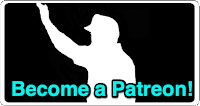Cubs manager Craig Counsell sought an infield fly rule call after Chicago 1B Michael Busch lost track of Brewers batter William Contreras' fly ball in the sun, allowing Milwaukee to load the bases in the 1st inning of NLDS Game 3.
With runners on first and second base with one out, Contreras hit a high fly ball in front of first base, on the infield.
The Official Baseball Rules defines the infield fly: "An INFIELD FLY is a fair fly ball (not including a line drive nor an attempted bunt) which can be caught by an infielder with ordinary effort, when first and second, or first, second and third bases are occupied, before two are out. The pitcher, catcher and any outfielder who stations themself in the infield on the play shall be considered infielders for the purpose of this rule."
Accordingly, the infield fly rule has four criteria: 1) first and second (or bases loaded), 2) before two are out, 3) the batter hits a fair fly ball (not line drive nor bunt), 4) that can be caught by an infielder with ordinary effort.
The first three criteria were plainly satisfied, which leaves us with #4: the ordinary effort criterion.
We thus turn to OBR's definition of that term: "ORDINARY EFFORT is the effort that a fielder of average skill at a position in that league or classification of leagues should exhibit on a play, with due consideration given to the condition of the field and weather conditions."
Because F3 Busch, the fielder we would expect to make a play on this ball, lost the ball in the afternoon Chicago sun, the "weather conditions" provision of the ordinary effort definition gets triggered: 1B Umpire Lance Barksdale, looking directly at Busch, ruled that this particular weather condition turned Busch's potential catch from requiring effort that was ordinary into extraordinary.
Umpires therefore ruled ordinary effort was not satisfied, which is why an infield fly was not declared.
Video as follows:




















